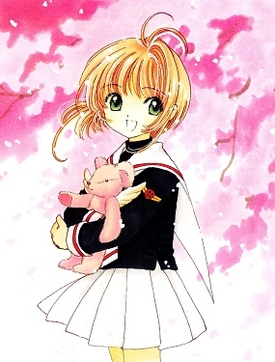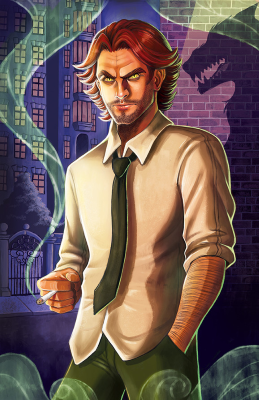
A protagonist is the main character of a story. The protagonist makes key decisions that affect the plot, primarily influencing the story and propelling it forward, and is often the character who faces the most significant obstacles. If a story contains a subplot, or is a narrative made up of several stories, then each subplot may have its own protagonist.

In a literary work, film, or other narrative, the plot is the sequence of events in which each event affects the next one through the principle of cause-and-effect. The causal events of a plot can be thought of as a series of events linked by the connector "and so". Plots can vary from the simple—such as in a traditional ballad—to forming complex interwoven structures, with each part sometimes referred to as a subplot or imbroglio.

A story within a story, also referred to as an embedded narrative, is a literary device in which a character within a story becomes the narrator of a second story. Multiple layers of stories within stories are sometimes called nested stories. A play may have a brief play within it, such as in Shakespeare's play Hamlet; a film may show the characters watching a short film; or a novel may contain a short story within the novel. A story within a story can be used in all types of narration including poems, songs, and video games.

In fiction, a false protagonist is a literary technique, often used to make the plot more jarring or more memorable by fooling the audience's preconceptions, that constructs a character who the audience assumes is the protagonist but is later revealed not to be.
Story structure or narrative structure is the recognizable or comprehensible way in which a narrative's different elements are unified, including in a particularly chosen order and often specifically referring to the ordering of the plot: the narrative series of events. In a play or work of theatre especially, this can be called dramatic structure, which is presented in audiovisual form. The following overviews how story structure works in a cross-cultural and general sense.
The Sprawl trilogy is William Gibson's first set of novels, composed of Neuromancer (1984), Count Zero (1986), and Mona Lisa Overdrive (1988).
A flashback is an interjected scene that takes the narrative back in time from the current point in the story. Flashbacks are often used to recount events that happened before the story's primary sequence of events to fill in crucial backstory. In the opposite direction, a flashforward reveals events that will occur in the future. Both flashback and flashforward are used to cohere a story, develop a character, or add structure to the narrative. In literature, internal analepsis is a flashback to an earlier point in the narrative; external analepsis is a flashback to a time before the narrative started.

Resplendent is an English language science fiction collection by British writer Stephen Baxter, published in 2006. It is the fourth and final book in the Destiny's Children series.

Combo Rangers is a series of webcomics created in 1998 by Japanese-Brazilian author Fábio Yabu. It is based on Japanese manga and the Super Sentai series. It started off as a parody, then developed more serious storylines that still included comedy. It features five main rangers as well as an extra white one. They are led by O Poderoso Combo, and fight against several forms of evil. Combo Rangers has won the HQ Mix Award three times.
Mind control has proven a popular subject in fiction, featuring in books and films such as The Manchurian Candidate and The IPCRESS File, both stories advancing the premise that controllers could hypnotize a person into murdering on command while retaining no memory of the killing. As a narrative device, mind control serves as a convenient means of introducing changes in the behavior of characters, and is used as a device for raising tension and audience uncertainty in the contexts of the Cold War and terrorism. Mind control has often been an important theme in science fiction and fantasy stories. Terry O'Brien comments: "Mind control is such a powerful image that if hypnotism did not exist, then something similar would have to have been invented: the plot device is too useful for any writer to ignore. The fear of mind control is equally as powerful an image."
The three-act structure is a model used in narrative fiction that divides a story into three parts (acts), often called the Setup, the Confrontation, and the Resolution. It was popularized by Syd Field in his 1979 book Screenplay: The Foundations of Screenwriting. Based on his recommendation that a play have a "beginning, middle, and end," the structure has been falsely attributed to Aristotle, who in fact argued for a two-act structure consisting of a "complication" and "dénouement" split by a peripeteia.

Sakura Kinomoto is the main protagonist and title character of Clamp's manga series Cardcaptor Sakura. In the English anime adaptation by Nelvana of the series, Cardcaptors, she is known as Sakura Avalon, though her surname was changed back in the second film's dub by Bang Zoom! Entertainment.
Characterization or characterisation is the representation of characters in narrative and dramatic works. The term character development is sometimes used as a synonym. This representation may include direct methods like the attribution of qualities in description or commentary, and indirect methods inviting readers to infer qualities from characters' actions, dialogue, or appearance. Such a personage is called a character. Character is a literary element.

Bigby Wolf is a fictional character in the American comic book series Fables published by DC Comics and its alternative imprint Vertigo. The character first appears in Fables #1 and was created by Bill Willingham and Lan Medina. He frequently serves as the lead character among the ensemble cast of Fables and is the central protagonist of Fables: Werewolves of the Heartland as well as Fables: The Wolf Among Us, the comic book adaptation of the 2013 video game The Wolf Among Us.

Edward James Kenway is a fictional character in Ubisoft's Assassin's Creed video game franchise. He was introduced as a supporting character in Assassin's Creed: Forsaken, a companion novel to the 2012 video game Assassin's Creed III. He subsequently appeared as the protagonist of the 2013 video game, Assassin's Creed IV: Black Flag, and its novelization, Assassin's Creed: Black Flag. In the former, he is portrayed by Welsh actor Matt Ryan through performance capture. Since Black Flag's release, the character has made further appearances in several other works within the franchise.
Suspended animation in fiction refers to the temporary cessation of life processes experienced by fictional characters, followed by their subsequent revival. This process is commonly employed as a plot device in science fiction narratives. It is frequently utilized to transport a character from the past to the future or to facilitate interstellar space travel, which necessitates an extended journey for months or years. In addition to accomplishing the character's primary objective in the future, they often encounter the unfamiliarity of a new world, which may bear only faint resemblance to their previous surroundings. On occasion, a character is portrayed as possessing skills or abilities that have become lost to society during their period of suspension, enabling them to assume a heroic role in their new temporal setting.

Shigeo Kageyama, nicknamed "Mob", is the protagonist from One's manga series Mob Psycho 100. Shigeo Kageyama is an average middle school-aged boy. Although he looks like an inconspicuous person, he is in fact a powerful esper with immense psychic power. To keep from losing control of this power, he constantly lives a life under an emotional shackle. In order to help learn how to control his abilities, Mob works as an assistant to con-man Reigen Arataka, a self-proclaimed spirit medium. Mob wants to live a normal life just like those around him, but a barrage of trouble keeps coming after him. With his suppressed emotions growing inside Mob little by little, his power threatens to break through its limits as he eventually encounters other espers like the Claws.

Rudeus Greyrat is the main protagonist of Rifujin na Magonote's novel series Mushoku Tensei. An unnamed 34-year-old Japanese hikikomori is kicked out by his siblings following his parents' death and his absence in their parent's funeral, as well as his behavior towards his kid niece. Upon some self-introspection, he had concluded that his life was ultimately pointless, but still intercepts a speeding truck heading towards a group of teenagers in an attempt to do something meaningful for once in his life and manages to pull one of them out of harm's way before dying. Awakening as a newborn baby, he realizes that he's been reincarnated in a world of sword and sorcery and resolves to live his second life to the fullest as Rudeus Greyrat. Due to inherited affinity and early training, in addition to his mother's influence, Rudeus becomes highly skilled at magic, and sets out to enjoy life and overcome his past.

Denji is the protagonist of the manga series Chainsaw Man by Tatsuki Fujimoto. As a young boy, he inherits his father's debt from the yakuza upon his father's death. After meeting the Chainsaw Devil Pochita, he becomes a Devil Hunter in an attempt to clear his debt. The yakuza kill him, and Pochita becomes his heart, setting a contract with Denji, who is to live his dreams of a normal life. After this, he can transform into the devil-human Hybrid known as Chainsaw Man by pulling a cord on his chest. As a Public Safety Devil Hunter, Denji fights alongside the members of Tokyo Special Division 4 in their battle to kill the Gun Devil, all the while pursuing his own personal interests.











